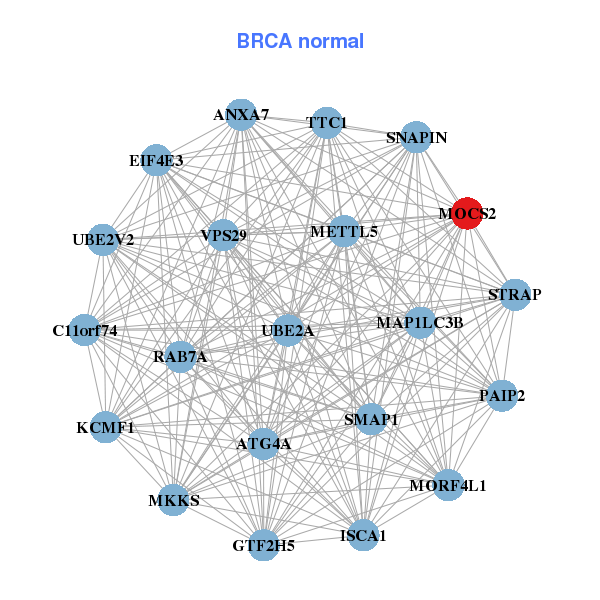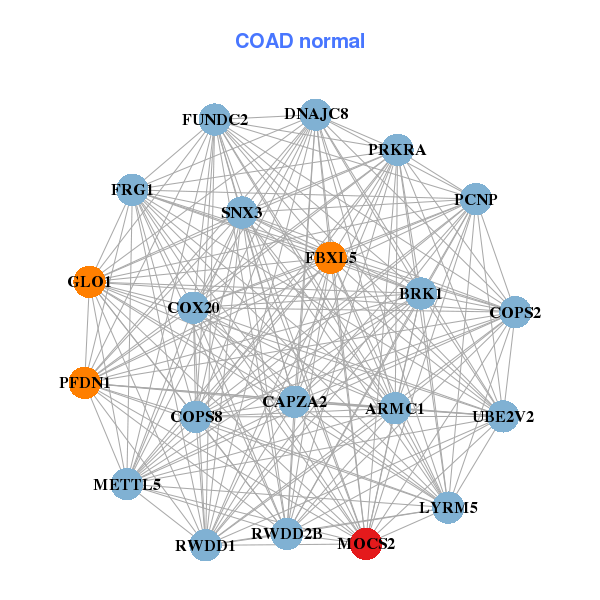|
||||||||||||||||||||
| |
| Phenotypic Information (metabolism pathway, cancer, disease, phenome) |
| |
| |
| Gene-Gene Network Information: Co-Expression Network, Interacting Genes & KEGG |
| |
|
| Gene Summary for MOCS2 |
| Top |
| Phenotypic Information for MOCS2(metabolism pathway, cancer, disease, phenome) |
| Cancer | CGAP: MOCS2 |
| Familial Cancer Database: MOCS2 | |
| * This gene is included in those cancer gene databases. |
|
|
|
|
|
| . | ||||||||||||||
Oncogene 1 | Significant driver gene in | |||||||||||||||||||
| cf) number; DB name 1 Oncogene; http://nar.oxfordjournals.org/content/35/suppl_1/D721.long, 2 Tumor Suppressor gene; https://bioinfo.uth.edu/TSGene/, 3 Cancer Gene Census; http://www.nature.com/nrc/journal/v4/n3/abs/nrc1299.html, 4 CancerGenes; http://nar.oxfordjournals.org/content/35/suppl_1/D721.long, 5 Network of Cancer Gene; http://ncg.kcl.ac.uk/index.php, 1Therapeutic Vulnerabilities in Cancer; http://cbio.mskcc.org/cancergenomics/statius/ |
| REACTOME_METABOLISM_OF_VITAMINS_AND_COFACTORS | |
| OMIM | |
| Orphanet | |
| Disease | KEGG Disease: MOCS2 |
| MedGen: MOCS2 (Human Medical Genetics with Condition) | |
| ClinVar: MOCS2 | |
| Phenotype | MGI: MOCS2 (International Mouse Phenotyping Consortium) |
| PhenomicDB: MOCS2 | |
| Mutations for MOCS2 |
| * Under tables are showing count per each tissue to give us broad intuition about tissue specific mutation patterns.You can go to the detailed page for each mutation database's web site. |
| There's no structural variation information in COSMIC data for this gene. |
| * From mRNA Sanger sequences, Chitars2.0 arranged chimeric transcripts. This table shows MOCS2 related fusion information. |
| ID | Head Gene | Tail Gene | Accession | Gene_a | qStart_a | qEnd_a | Chromosome_a | tStart_a | tEnd_a | Gene_a | qStart_a | qEnd_a | Chromosome_a | tStart_a | tEnd_a |
| CF529200 | MOCS2 | 15 | 190 | 5 | 52393901 | 52394076 | DAB1 | 181 | 200 | 1 | 57712226 | 57712245 | |
| AA659769 | MOCS2 | 1 | 66 | 5 | 52402490 | 52402591 | PTH2R | 49 | 128 | 2 | 209382881 | 209383318 | |
| Top |
| There's no copy number variation information in COSMIC data for this gene. |
| Top |
|
 |
| Top |
| Stat. for Non-Synonymous SNVs (# total SNVs=10) | (# total SNVs=4) |
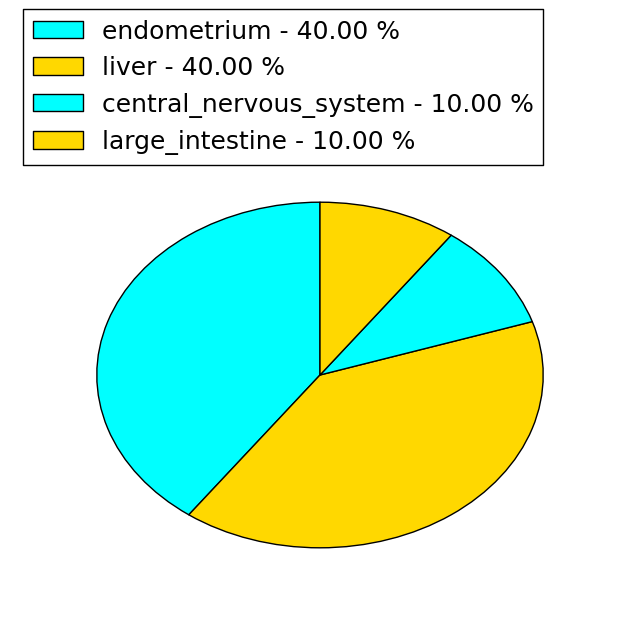 | 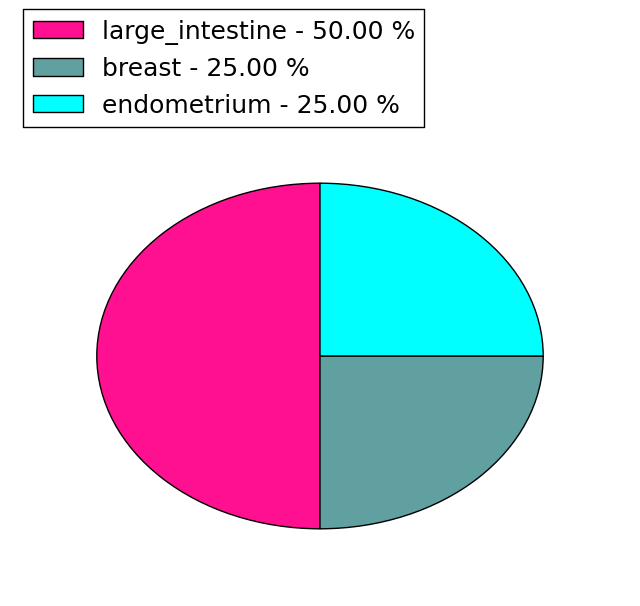 |
(# total SNVs=1) | (# total SNVs=2) |
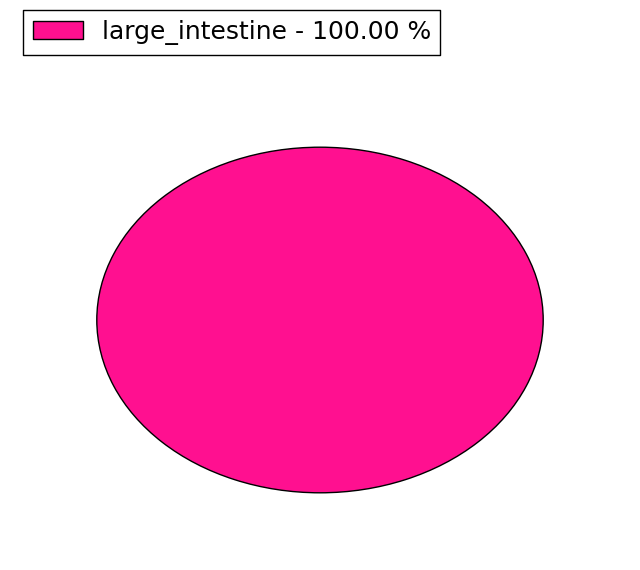 | 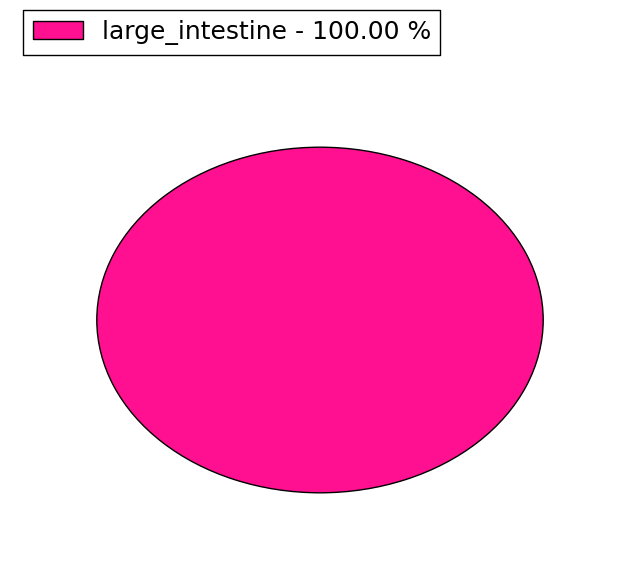 |
| Top |
| * When you move the cursor on each content, you can see more deailed mutation information on the Tooltip. Those are primary_site,primary_histology,mutation(aa),pubmedID. |
| GRCh37 position | Mutation(aa) | Unique sampleID count |
| chr5:52402976-52402976 | p.C10Y | 2 |
| chr5:52398014-52398014 | p.I47V | 2 |
| chr5:52396238-52396238 | p.? | 2 |
| chr5:52402939-52402940 | p.L23fs*5 | 2 |
| chr5:52396335-52396335 | p.I136T | 1 |
| chr5:52402942-52402942 | p.P21P | 1 |
| chr5:52396365-52396365 | p.? | 1 |
| chr5:52402945-52402945 | p.S20S | 1 |
| chr5:52397321-52397321 | p.F82S | 1 |
| chr5:52402951-52402951 | p.P18P | 1 |
| Top |
|
 |
| Point Mutation/ Tissue ID | 1 | 2 | 3 | 4 | 5 | 6 | 7 | 8 | 9 | 10 | 11 | 12 | 13 | 14 | 15 | 16 | 17 | 18 | 19 | 20 |
| # sample | 1 | 1 | 1 | 1 | 1 | 2 | 6 | |||||||||||||
| # mutation | 1 | 1 | 1 | 1 | 1 | 2 | 6 | |||||||||||||
| nonsynonymous SNV | 1 | 1 | 1 | 1 | 2 | 6 | ||||||||||||||
| synonymous SNV | 1 |
| cf) Tissue ID; Tissue type (1; BLCA[Bladder Urothelial Carcinoma], 2; BRCA[Breast invasive carcinoma], 3; CESC[Cervical squamous cell carcinoma and endocervical adenocarcinoma], 4; COAD[Colon adenocarcinoma], 5; GBM[Glioblastoma multiforme], 6; Glioma Low Grade, 7; HNSC[Head and Neck squamous cell carcinoma], 8; KICH[Kidney Chromophobe], 9; KIRC[Kidney renal clear cell carcinoma], 10; KIRP[Kidney renal papillary cell carcinoma], 11; LAML[Acute Myeloid Leukemia], 12; LUAD[Lung adenocarcinoma], 13; LUSC[Lung squamous cell carcinoma], 14; OV[Ovarian serous cystadenocarcinoma ], 15; PAAD[Pancreatic adenocarcinoma], 16; PRAD[Prostate adenocarcinoma], 17; SKCM[Skin Cutaneous Melanoma], 18:STAD[Stomach adenocarcinoma], 19:THCA[Thyroid carcinoma], 20:UCEC[Uterine Corpus Endometrial Carcinoma]) |
| Top |
| * We represented just top 10 SNVs. When you move the cursor on each content, you can see more deailed mutation information on the Tooltip. Those are primary_site, primary_histology, mutation(aa), pubmedID. |
| Genomic Position | Mutation(aa) | Unique sampleID count |
| chr5:52397991 | p.V81F | 1 |
| chr5:52398001 | p.E78K | 1 |
| chr5:52402945 | p.S8P,MOCS2 | 1 |
| chr5:52402951 | p.H45Q | 1 |
| chr5:52402960 | p.S23L | 1 |
| chr5:52402983 | p.R22H | 1 |
| chr5:52404357 | p.T19I | 1 |
| chr5:52394488 | p.E171K | 1 |
| chr5:52404424 | p.P163S | 1 |
| chr5:52396255 | p.I136T | 1 |
| * Copy number data were extracted from TCGA using R package TCGA-Assembler. The URLs of all public data files on TCGA DCC data server were gathered on Jan-05-2015. Function ProcessCNAData in TCGA-Assembler package was used to obtain gene-level copy number value which is calculated as the average copy number of the genomic region of a gene. |
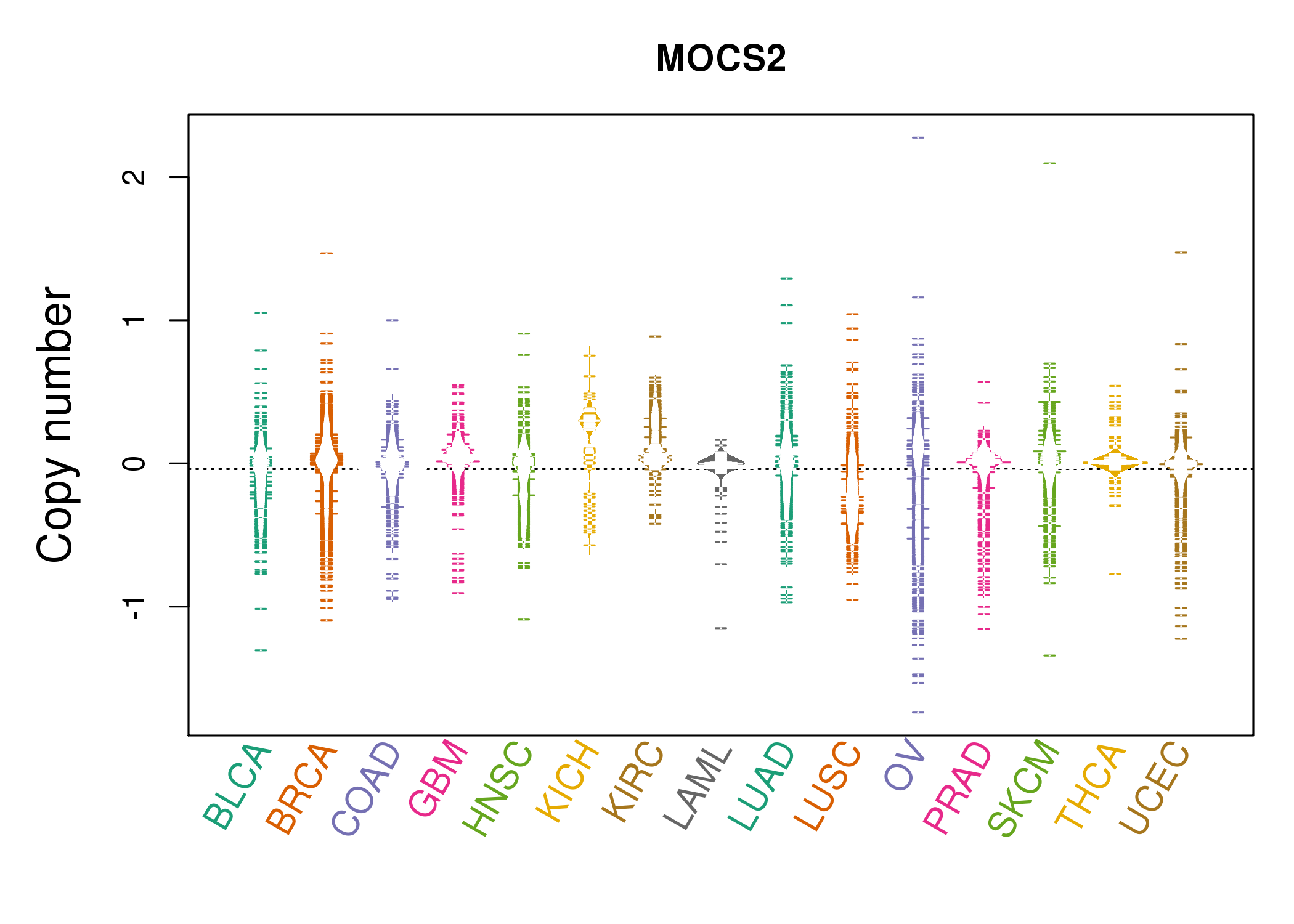 |
| cf) Tissue ID[Tissue type]: BLCA[Bladder Urothelial Carcinoma], BRCA[Breast invasive carcinoma], CESC[Cervical squamous cell carcinoma and endocervical adenocarcinoma], COAD[Colon adenocarcinoma], GBM[Glioblastoma multiforme], Glioma Low Grade, HNSC[Head and Neck squamous cell carcinoma], KICH[Kidney Chromophobe], KIRC[Kidney renal clear cell carcinoma], KIRP[Kidney renal papillary cell carcinoma], LAML[Acute Myeloid Leukemia], LUAD[Lung adenocarcinoma], LUSC[Lung squamous cell carcinoma], OV[Ovarian serous cystadenocarcinoma ], PAAD[Pancreatic adenocarcinoma], PRAD[Prostate adenocarcinoma], SKCM[Skin Cutaneous Melanoma], STAD[Stomach adenocarcinoma], THCA[Thyroid carcinoma], UCEC[Uterine Corpus Endometrial Carcinoma] |
| Top |
| Gene Expression for MOCS2 |
| * CCLE gene expression data were extracted from CCLE_Expression_Entrez_2012-10-18.res: Gene-centric RMA-normalized mRNA expression data. |
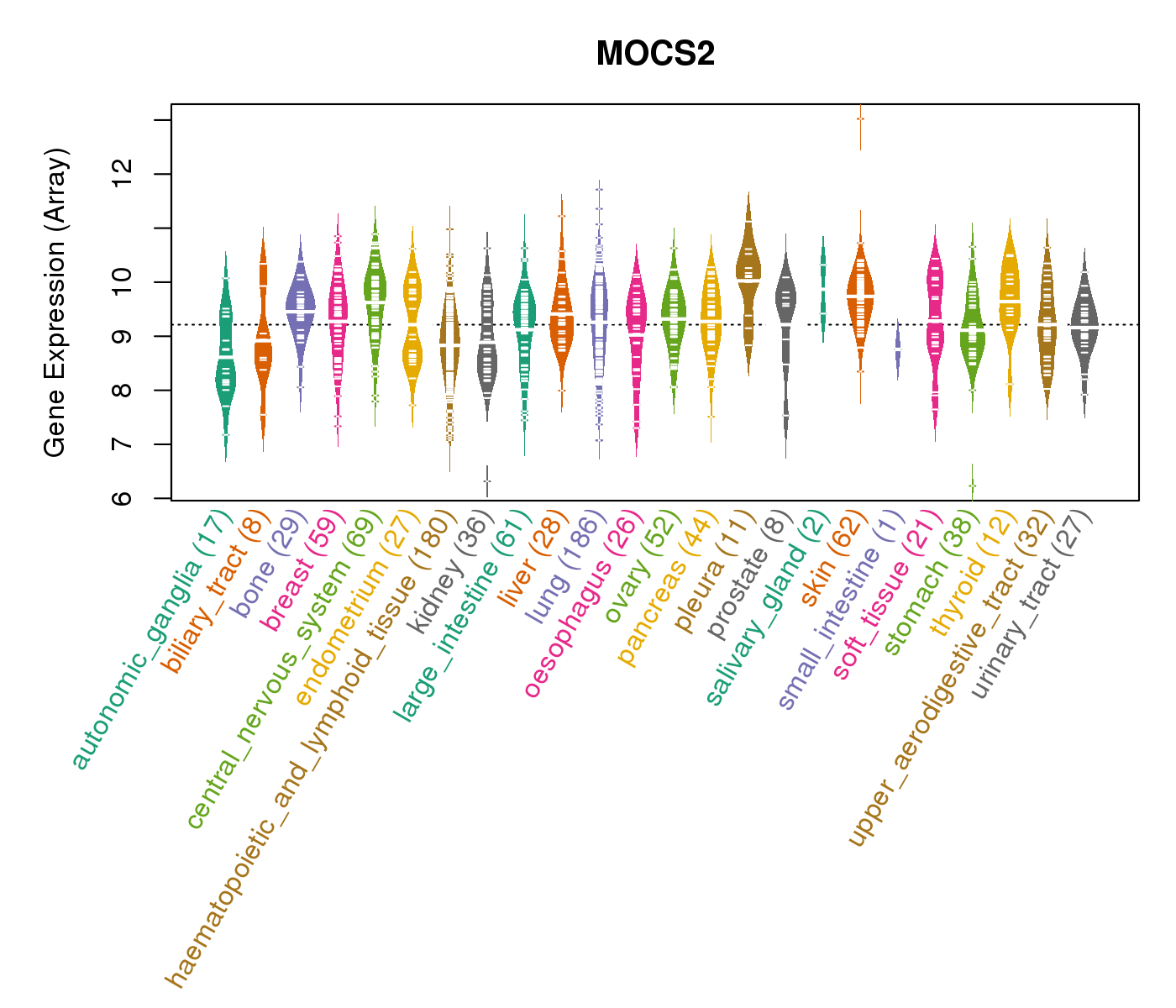 |
| * Normalized gene expression data of RNASeqV2 was extracted from TCGA using R package TCGA-Assembler. The URLs of all public data files on TCGA DCC data server were gathered at Jan-05-2015. Only eight cancer types have enough normal control samples for differential expression analysis. (t test, adjusted p<0.05 (using Benjamini-Hochberg FDR)) |
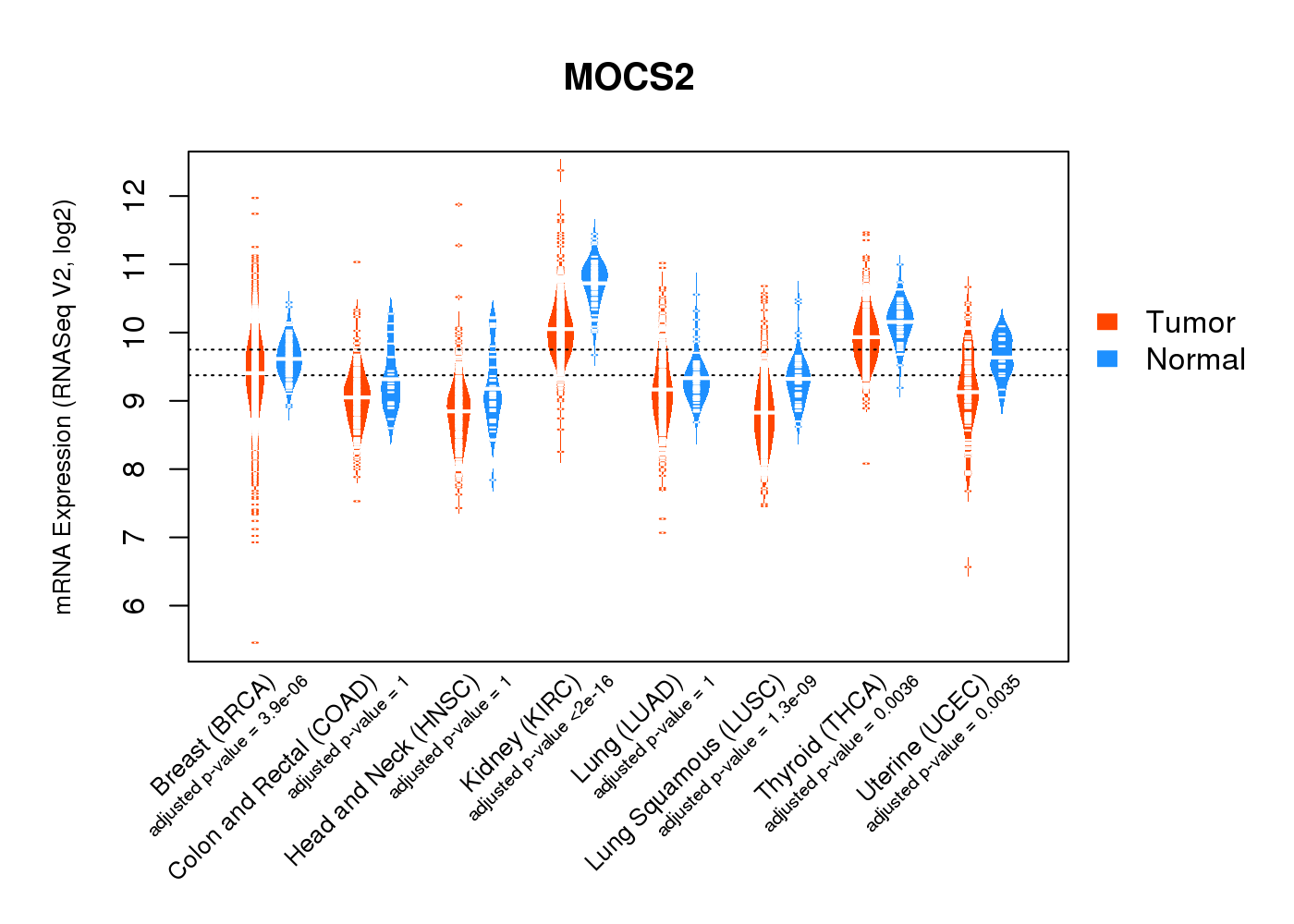 |
| Top |
| * This plots show the correlation between CNV and gene expression. |
: Open all plots for all cancer types
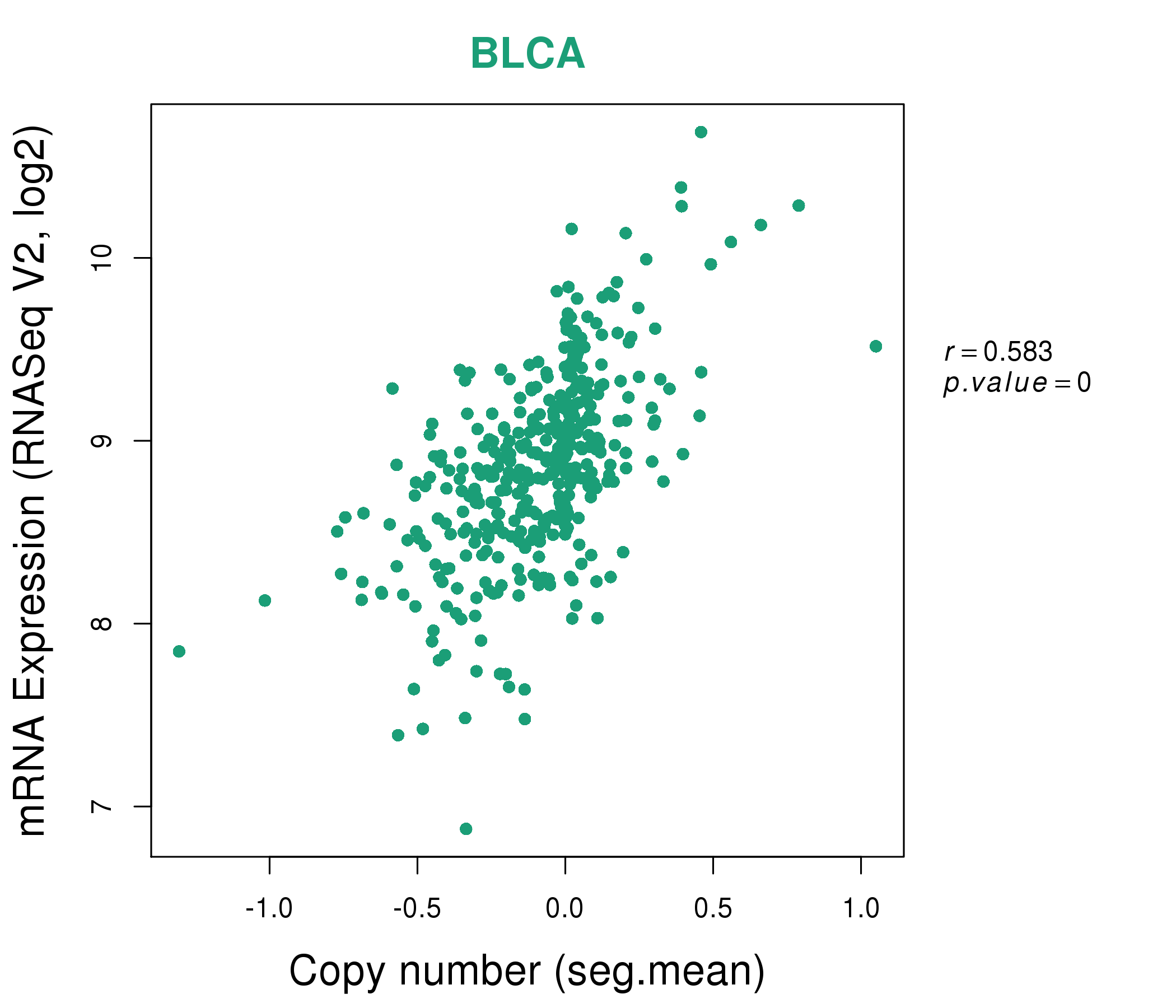 |
|
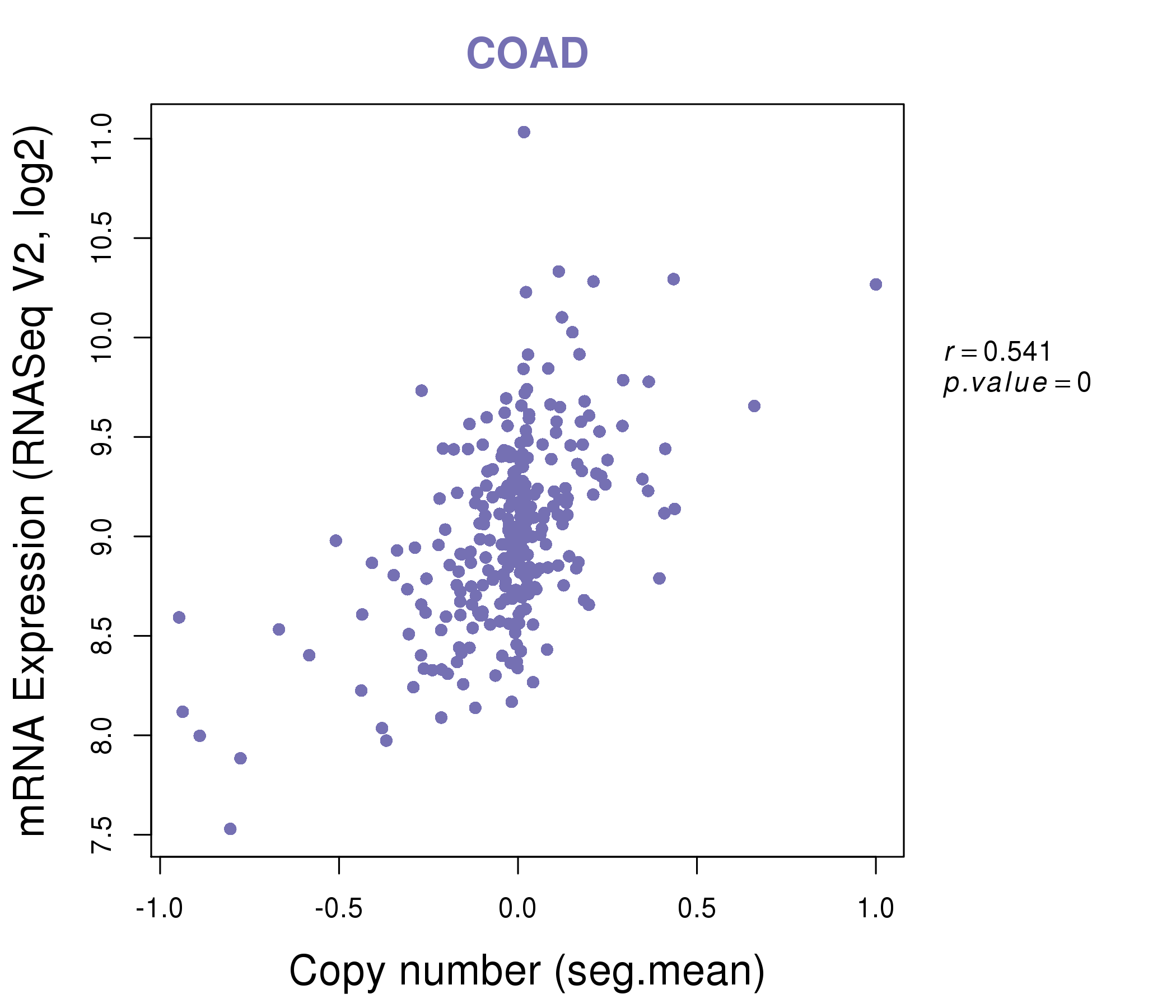 |
|
| Top |
| Gene-Gene Network Information |
| * Co-Expression network figures were drawn using R package igraph. Only the top 20 genes with the highest correlations were shown. Red circle: input gene, orange circle: cell metabolism gene, sky circle: other gene |
: Open all plots for all cancer types
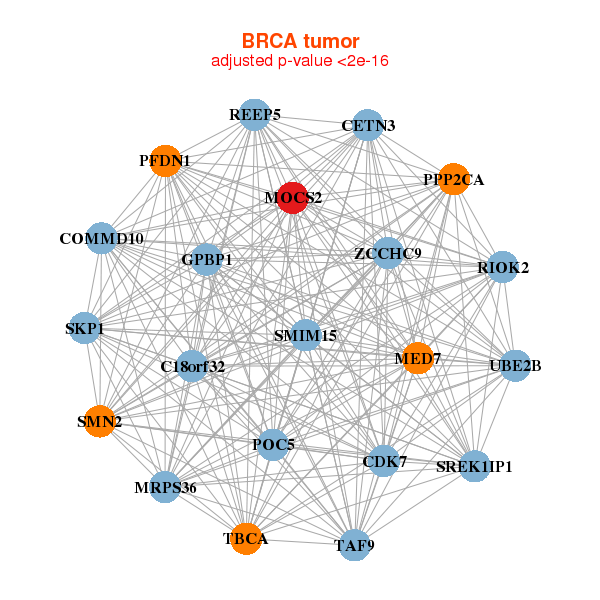 |
|
| C18orf32,SMIM15,CDK7,CETN3,COMMD10,GPBP1,MED7, MOCS2,MRPS36,PFDN1,POC5,PPP2CA,REEP5,RIOK2, SREK1IP1,SKP1,SMN2,TAF9,TBCA,UBE2B,ZCCHC9 | ANXA7,ATG4A,C11orf74,EIF4E3,GTF2H5,ISCA1,KCMF1, MAP1LC3B,METTL5,MKKS,MOCS2,MORF4L1,PAIP2,RAB7A, SMAP1,SNAPIN,STRAP,TTC1,UBE2A,UBE2V2,VPS29 |
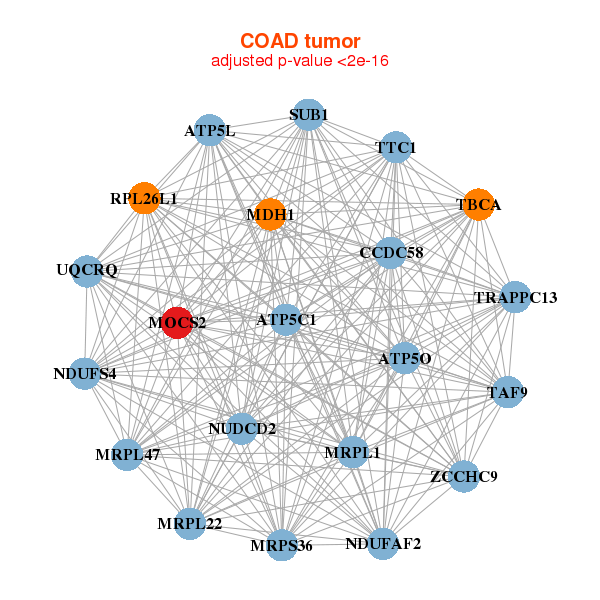 |
|
| ATP5C1,ATP5L,ATP5O,TRAPPC13,CCDC58,MDH1,MOCS2, MRPL1,MRPL22,MRPL47,MRPS36,NDUFAF2,NDUFS4,NUDCD2, RPL26L1,SUB1,TAF9,TBCA,TTC1,UQCRQ,ZCCHC9 | ARMC1,BRK1,CAPZA2,COPS2,COPS8,DNAJC8,COX20, FBXL5,FRG1,FUNDC2,GLO1,LYRM5,METTL5,MOCS2, PCNP,PFDN1,PRKRA,RWDD1,RWDD2B,SNX3,UBE2V2 |
| * Co-Expression network figures were drawn using R package igraph. Only the top 20 genes with the highest correlations were shown. Red circle: input gene, orange circle: cell metabolism gene, sky circle: other gene |
: Open all plots for all cancer types
| Top |
: Open all interacting genes' information including KEGG pathway for all interacting genes from DAVID
| Top |
| Pharmacological Information for MOCS2 |
| There's no related Drug. |
| Top |
| Cross referenced IDs for MOCS2 |
| * We obtained these cross-references from Uniprot database. It covers 150 different DBs, 18 categories. http://www.uniprot.org/help/cross_references_section |
: Open all cross reference information
|
Copyright © 2016-Present - The Univsersity of Texas Health Science Center at Houston @ |








